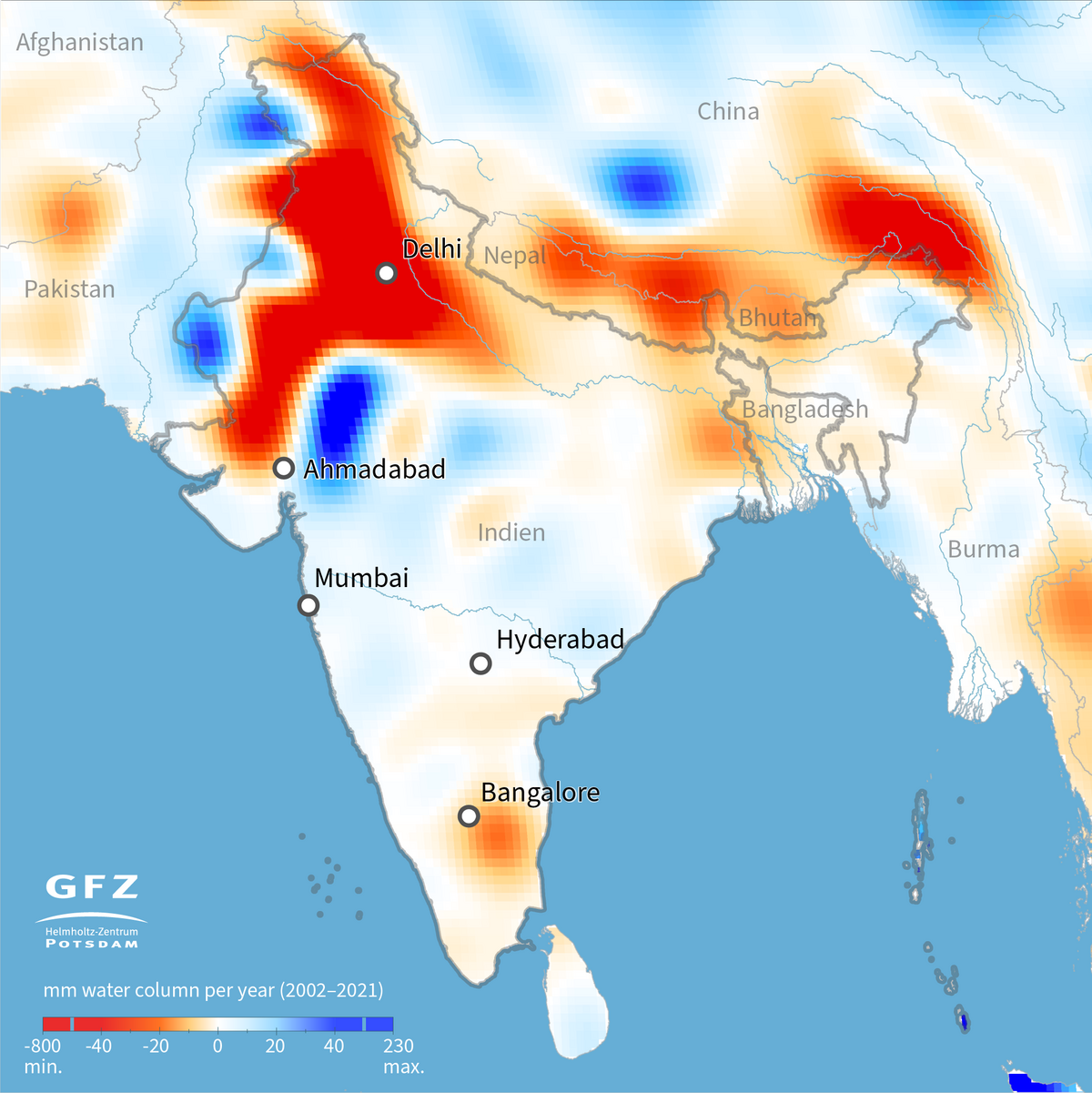Picture of the Month
Decrease in total water storage in northern India
Long-term trend in total water storage in India and the Himalayas (2002-2021)
The map shows the trend in terrestrial water storage (TWS) over the period 2002 to 2021, i.e. over 20 years, for India and neighbouring regions. Trends are particularly useful for highlighting long-term processes. Negative trends, i.e. losses in total water storage over the observation period, are coloured red. Positive trends, i.e. areas in which total water storage has increased, are coloured blue.
Two red areas, i.e. negative trends, stand out on the map: one in north-west India around Delhi and another on the north-eastern border with Nepal, Bhutan and China, i.e. in the highest regions of the Himalayas. The latter mass losses are, as in many other high mountain areas around the world, due to the melting glaciers caused by climate change.
The negative trends in the north-west, however, are due to the long-term overexploitation of natural sources of fresh water, especially groundwater, by humans. While this region is close to the southern flanks of the Himalayas where a lot of rain falls, and the major rivers Indus and Ganges partly flow through the red-coloured area, it is also very densely populated and intensive agriculture is practised. More groundwater is used for domestic and industrial purposes, but especially for irrigation, than is recharged by percolation. In addition, the deserts of Thar and Cholistan are located to the south-west of Delhi. The population of the Indian state of Rajasthan and the neighbouring Pakistan is particularly dependent on groundwater, so that a clearly negative trend in total water storage can also be seen there. Rajasthan is also one of the Indian states most affected by climate change. Record high temperatures of over 50°C are regularly broken, which further increases the pressure on water resources due to higher evaporation rates.
Text: Julian Haas, GFZ
Download
You may use the map by stating the copyright.
Download the map via the media library
